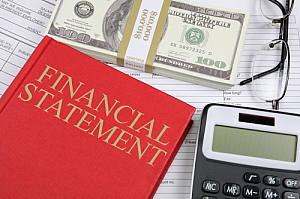The Important of Financial Statements
Money constantly flows through a company, and someone has to keep track of it. That's why God made accountants. Someone also has to make sure the company makes decisions that make money. That's where financial managers come in.
Accountants and financial managers have special ways of analyzing the health and growth of a company. They mainly use numbers, and they present these numbers in financial statements. Financial statements are the most important way you can understand and analyze a company. As a manager, you must understand these statements in order to know how your budgets, transactions, and decisions affect the company.
Assets, Liabilities, and Owners' Equity: You Need 'Em All
To understand the balance sheet, you must first understand how money moves in and out of a company. Every transaction that a company conducts represents either an inflow or outflow of cash. Most inflows of cash come from sales, but some come from loans or from the sale of stock. Most outflows of cash are created by expenses. When the company purchases materials, pays its employees or pays interest on a loan, it has paid an expense.
In general, every single thing the company owns can be classified as an asset. The furniture, the inventory, the equipment, the building, even the cash in the bank and in the petty-cash drawer-all are assets. Assets have one thing in common: They are there to generate cash (unless they are cash, and even then, the cash should be invested. If an asset can't generate cash somehow, it doesn't belong on the books-the records kept by the bookkeeper or accounting staff.
Assets also include accounts receivable-money owed to the company by customers who have purchased goods or services on credit.
A liability is an amount of money owed by the company to an organization or individual. Liabilities must be paid on or before some specific date and for a specific reason. Most liabilities are owed to the company's suppliers and creditors. One common exception is "Taxes Payable" which are, of course, owed to the government.
Liabilities arising from transactions that took place in the past. For instance, if someone sent you a keg of nails, they also sent you an invoice that you probably have 30 days to pay. That invoice is a liability.
Owners' equity is the amount left for the company's owners after the liabilities are subtracted from the assets. Put another way:
Assets - Liabilities = Owners' Equity
This simply means that the shareholders own the assets and owe the liabilities. After you subtract what is owed from what is owned, you have the actual stake the owners have in the company and the actual value of the company. Owners' equity is also called net worth.
Meet the Balance Sheet
The balance sheet shows assets, liabilities, and owner's equity at a certain time, usually at the end of a quarter or fiscal year (the year that the company uses for budgeting and financial reporting.
The formula for the balance sheet is:
Assets = Liabilities + Owners' Equity
You'll notice that this version of the formula is a bit different from the calculation for owners' equity. This version expresses three things:
➤ The balance sheet presents assets on the left-hand side of the statement and liabilities and owners' equity on the right-hand side. (For reasons of space or format, some balance sheets present assets on the top and liabilities and owners' equity below, but the concept remains the same:
Assets = Liabilities + Owners' Equity.
➤ The balance sheet must balance. Assets must equal liabilities plus owners' equity.
➤ Assets are financed by liabilities and owners' equity. Liabilities and equity exist to finance assets. Assets exist to generate cash to pay off the liabilities, with enough left over to give the owners a profit.
